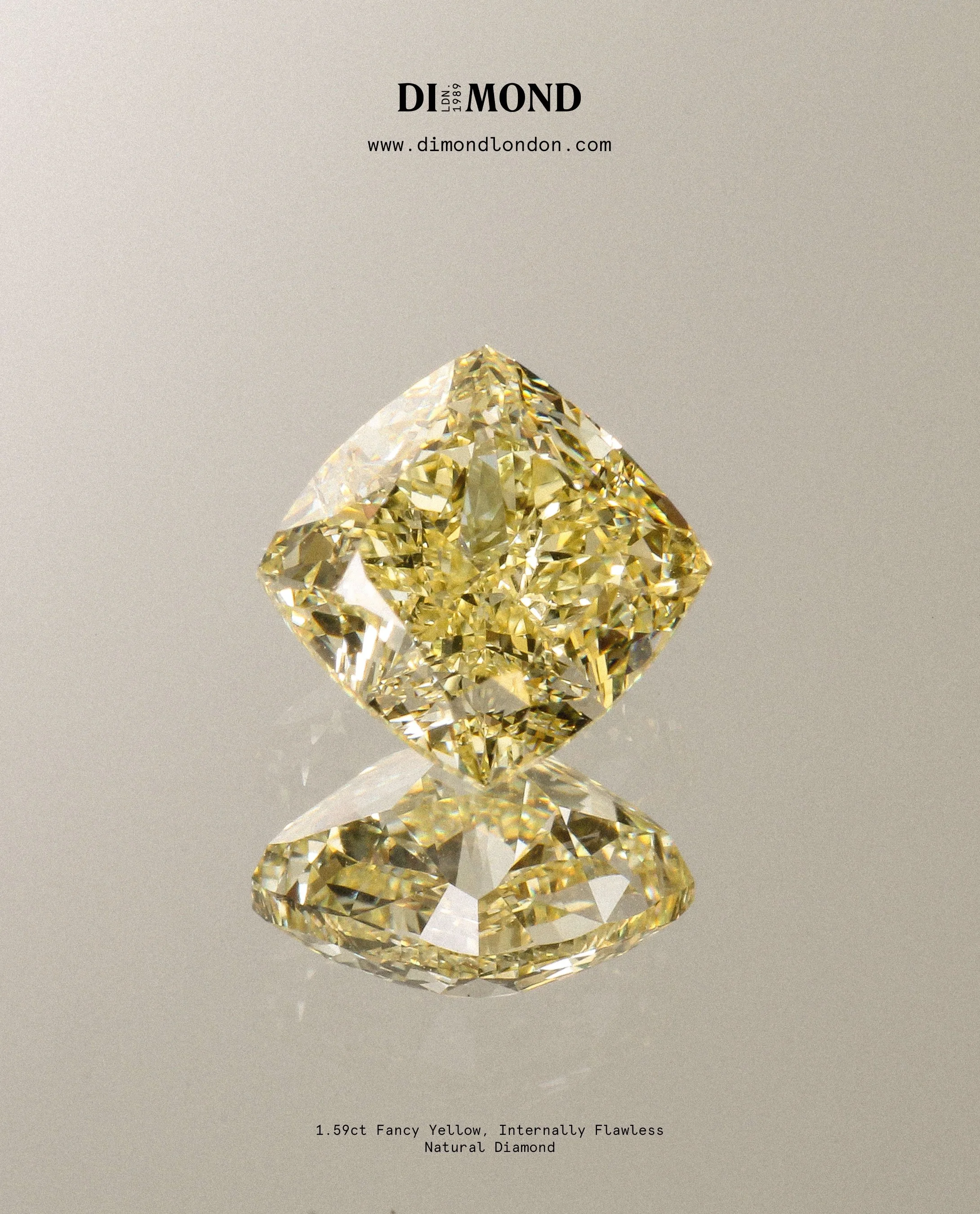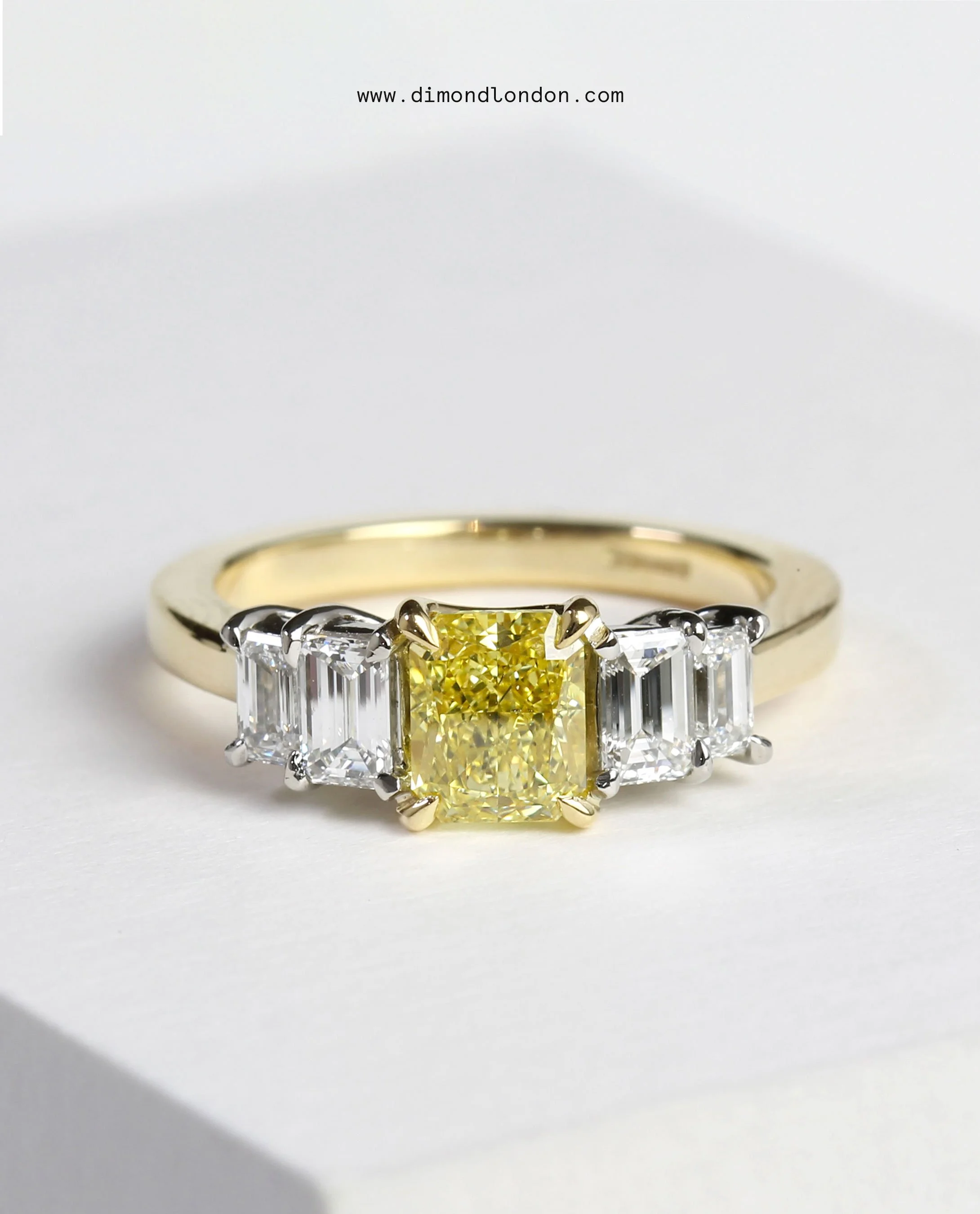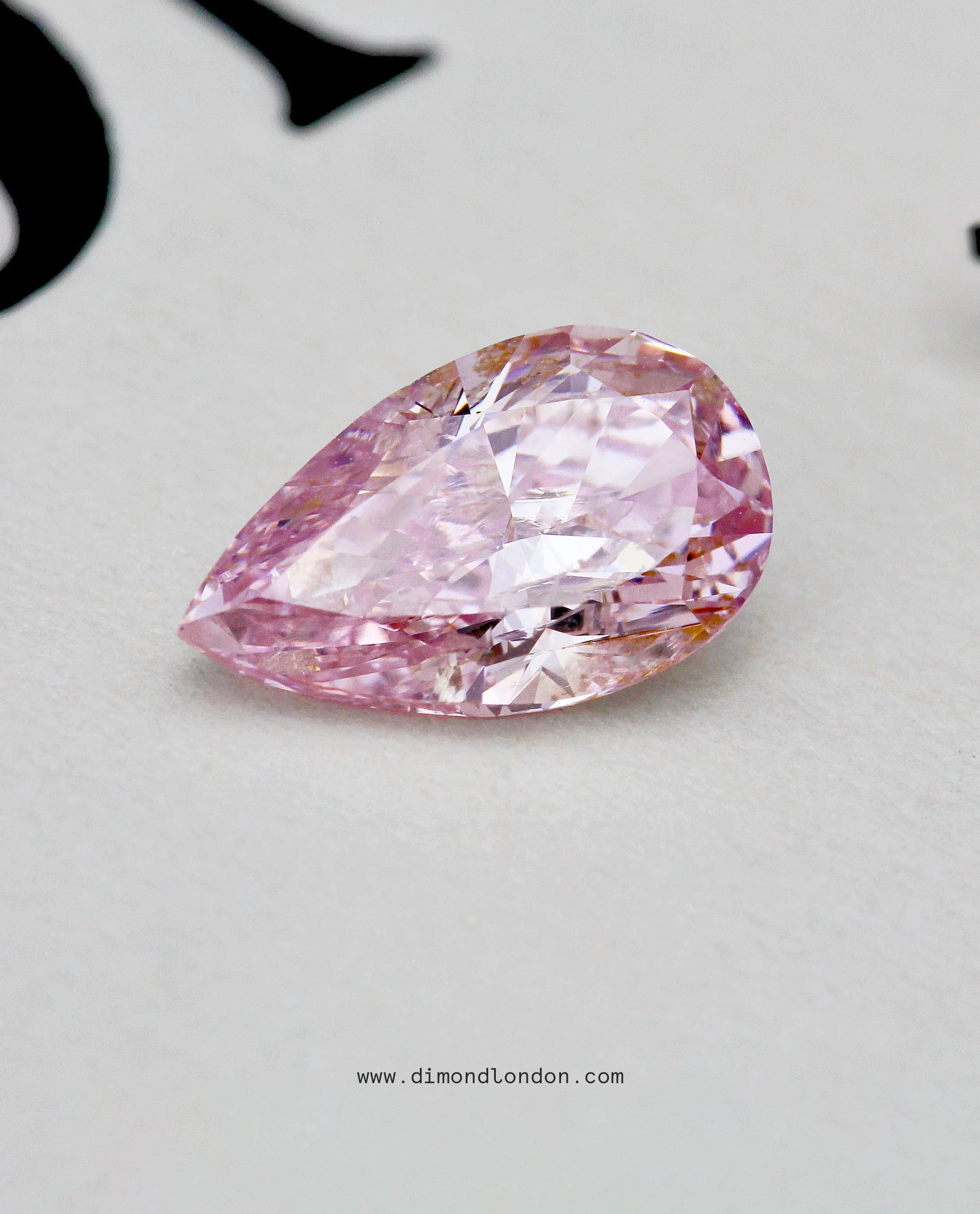EXPLORING THE WORLD OF COLOURED DIAMONDS
For over 60 years, we have dedicated ourselves to the art of diamond curation, ensuring that no stone is left unturned in our search to provide the best selection for our clients. Our expertise goes beyond traditional white diamonds to include a beautiful array of coloured diamonds, such as the striking yellow and pink varieties.
The spectrum of diamond colours
Diamonds are renowned for their brilliant, colourless clarity, but they actually come in a wide range of hues. The primary colours found in diamonds include:
Yellow
Pink
Blue
Green
Orange
Red
Purple
Brown
Each of these colours can vary in intensity, ranging from faint to vivid.
The creation of colour in diamonds
The colour in diamonds is primarily caused by the presence of trace elements or structural irregularities within the crystal lattice. Here’s how some of the most common colours are formed:
Yellow diamonds: The presence of nitrogen atoms causes the yellow hue. The more nitrogen present, the more intense the yellow colour.
Pink diamonds: The exact cause of pink colouration is still debated, but it is generally believed to result from unique pressure and temperature conditions that cause distortions in the diamond’s crystal lattice.
Blue diamonds: Boron impurities are responsible for the blue colour. The amount of boron determines the intensity of the blue shade.
Green diamonds: Exposure to natural radiation over millions of years can cause diamonds to turn green.
Red and purple diamonds: These are extremely rare and are thought to derive their colour from unique crystal lattice distortions.
Among coloured diamonds, the red diamond stands as the rarest and most valuable. True red diamonds are incredibly scarce, with only a handful known to exist. Their rarity and intense color make them some of the most expensive diamonds on the market. The Moussaieff Red, a 5.11ct red diamond, is one of the most famous and valuable red diamonds in the world.
Where are coloured diamonds found?
Coloured diamonds are mined in various locations around the world, with some regions being particularly renowned for certain hues:
Australia: The Argyle Mine, now closed, was famous for its pink, red, and violet diamonds.
South Africa: Known for producing yellow and blue diamonds, particularly from the Cullinan Mine.
Russia: The Mir Mine and others in Siberia are known for producing a wide range of colours, including green diamonds.
Brazil: Known for producing diamonds of various colours, including some of the rarest hues.
India: Historically significant as a source of some of the world's most famous coloured diamonds, such as the blue Hope Diamond.
What makes a coloured diamond special?
Coloured diamonds are exceptional due to their rarity and the unique beauty they offer. Unlike colourless diamonds, which are valued for their lack of colour, coloured diamonds are prized for the richness and intensity of their hues. The most vivid and intense coloured diamonds are extremely rare and highly sought after.
Understanding the Four Cs is essential when evaluating any diamond, and this holds true for coloured diamonds as well. However, for coloured diamonds, the 'colour' aspect takes on a different dimension, focusing on the depth and saturation of the hue rather than the absence of colour.
Grading coloured diamonds
Coloured diamonds are graded differently from their colourless counterparts. While colourless diamonds are graded on the absence of colour using the D-Z scale, coloured diamonds are evaluated based on the hue, tone, and saturation of their colour. The Gemological Institute of America (GIA) uses a specific scale for coloured diamonds, categorising them into nine grades, from faint to fancy vivid.
Faint
Very light
Light
Fancy light
Fancy
Fancy dark
Fancy deep
Fancy intense
Fancy vivid
This grading system helps determine the value and desirability of coloured diamonds, with fancy vivid diamonds being the most desirable.
The impact of colour on diamond pricing
The colour of a diamond significantly influences its price. While colourless diamonds are valued for their purity, coloured diamonds are prized for the richness and intensity of their colours. The more intense and rare the colour, the higher the price. For instance, a fancy vivid pink or blue diamond can be exponentially more expensive than a similarly sized colourless diamond.
Whether you're considering a coloured diamond for an engagement ring or another piece of fine jewellery, understanding their creation, grading, and value will help you make an informed and inspired choice.



